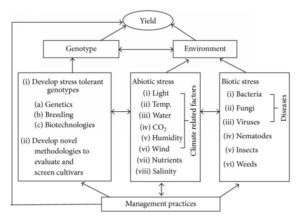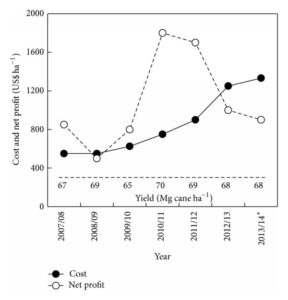Climate Change and Its Impact on the Sugarcane Industry: Challenges and Strategies
The impact of global climate change on the sugarcane industry is complex and multifaceted. Here are the key insights drawn from various sources:
1. Overall Impact on Sugarcane Production:
-
- Climate change is expected to significantly affect sugarcane production, particularly in developing countries due to their lower adaptive capacity and higher vulnerability to natural hazards.
- Extreme weather events like droughts and tropical cyclones have caused fluctuations in sugarcane and sugar yields.
- Higher temperatures due to climate change can increase evapotranspiration rates, reducing water availability in soil, thereby making sugarcane cultivation more challenging and increasing irrigation demands.

2. Regional Variations:
-
- In some regions, like parts of Brazil, climate change might improve sugarcane water use efficiency and increase yields. However, this varies significantly based on geographic location and existing climate conditions.
- In countries like China, drought is a major stress factor for sugarcane production, leading to significant yield reductions in some years.
- Climate change impacts can also vary within a country, as seen in Brazil, where some regions experience yield losses while others gain due to better growing conditions
3.Disease and Pest Impact:
A shift in temperature can affect the prevalence of diseases, insects, and weeds in sugarcane production. For example, warmer temperatures are likely to increase the incidence of smut disease and exacerbate ratoon stunting disease.
The incidence and severity of diseases like sugarcane orange rust have been linked to climate conditions such as warmer winters and higher humidity.

4.Adaptation and Mitigation Strategies:
-
- Developing drought-tolerant varieties, improving irrigation infrastructure, and enhancing management practices are key strategies for adapting to climate change in sugarcane production.
- The development of new sugarcane cultivars that are more tolerant to stress environments is a critical strategy. This includes the use of molecular biology and genetic engineering to improve sugarcane’s resilience to climate change.
- Genetically modified (GM) sugarcane varieties that are resistant to drought, diseases, and have higher sugar content are being developed as a way to mitigate the negative impacts of environmental stresses due to climate change.

Commercial sugarcane cultivars and their % of total hectarage in the 2012-2013 harvest season in Florida. Total area = 172,118 ha. Data are adopted from Rice et al.
Impact on Local Climate and Environment:
-
- Sugarcane production practices, like residue burning, significantly contribute to greenhouse gas emissions. However, strategies like improving green harvest techniques can reduce CO₂ emissions from sugarcane production.
- The expansion of sugarcane cultivation, in some cases, can have a local cooling effect, which might be beneficial for environmental protection in the context of rising atmospheric CO₂ levels and surface temperatures.
As per “Research Gate” Climate change is expected to have important consequences for sugarcane production in the world, especially in the developing countries because of relatively low adaptive capacity, high vulnerability to natural hazards, and poor forecasting systems and mitigating strategies. Sugarcane production may have been negatively affected and will continue to be considerably affected by increases in the frequency and intensity of extreme environmental conditions due to climate change. The degree of climate change impact on sugarcane is associated with geographic location and adaptive capacity. Briefly reviewed sugarcane response to climate change events, sugarcane production in several different countries, and challenges for sugarcane production in climate change in order for us to better understand effects of climate change on sugarcane production and to propose strategies for mitigating the negative impacts of climate change and improving sugarcane production sustainability and profitability.
In conclusion, while the impact of climate change on the sugarcane industry varies regionally, it generally poses significant challenges. Adaptation and mitigation strategies, including the development of stress-tolerant varieties and improved agricultural practices, are essential for sustaining and enhancing sugarcane production in the face of these challenges. Additionally, sugarcane cultivation’s impact on local climate conditions and its role in greenhouse gas emissions are crucial considerations for future agricultural and environmental policies.


